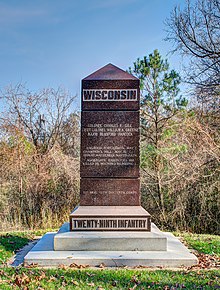에티오피아의 행정 구역
Regions of Ethiopia| 에티오피아의 지방 국가 및 전세 도시 | |
|---|---|
 | |
| 카테고리 | 페더레이션 |
| 위치 | 에티오피아 연방민주공화국 |
| 창조했다 |
|
| 번호 | 11개 지역, 2개 전세시(2021년 기준) |
| 정부 |
|
| 소분할 |
|
 |
|---|
에티오피아는 민족언어 기반의 지역 국가(암하라어: 복수: ል kilil killoch, 단수: ል kilil kilil, 단수: Naannolee, 복수: Naanolee)와 전세 도시(복수: 아스테다더 아카바비와치, 단수: ed ast ast ast ast)로 세분화된 연방이다.이 행정 구역 체계는 1992년 에티오피아 과도정부 하에서 에티오피아의 주를 대체하였고 1995년 현재의 에티오피아 헌법이 [1]발효되면서 공식화 되었다.
각 지역은 지역 의회에 의해 관리되며, 그 구성원은 직접 선출되어 각 지역을 대표한다.각 협의회에는 의장이 있으며, 이들은 협의회에 의해 선출된다.각 지역마다 집행위원회도 있는데, 그 위원은 시의원 중에서 대통령이 선출하고 시의회의 승인을 받는다.각 지역마다 섹터 사무국이 있으며, 이 사무국은 의회의 권한을 실행하고 집행위원회에 [2]보고한다.
11개의 지방 주와 2개의 전세 도시가 있으며, 후자는 수도 아디스아바바와 2004년에 전세된 디레 다와이다.물리적인 지리나 역사가 아닌 민족과 언어를 기반으로 하는 이 지역은 면적과 인구가 매우 다양합니다. 가장 주목할 만한 예는 하라리 지역입니다. 하라리 지역은 어느 도시보다 면적과 인구가 적습니다.1992년에 설립되었을 때, 더 많은 지역이 있었지만,[3] 1992년 6월 21일 제1차 지역 의회 선거에 이어 1992년에 5개 지역이 합병되어 다민족 남부 국가, 국적, 인민 지역이 되었다.
"킬"이라는 단어는 더 구체적으로 "보호구역" 또는 "보호구역"[4]을 의미합니다.이 지역의 민족적 기반과 "킬"이라는 단어의 선택은 아파르트헤이트 남아공의 [5]반투스탄과 비교되는 집권당에 반대하는 사람들로부터 격렬한 비판을 받아왔다.
지역 및 시 행정 목록
| 플래그 | 이름. | 인구[6] | 면적(km2)[7] | 자본의 | 지도 |
|---|---|---|---|---|---|
| 아디스아바바 (시) | 3,384,569 | 527 | 아디스 아바바 |  | |
| 아파르 주 | 1,152,300 | 72,051 | 세메라 |  | |
| 암하라 주 | 21,134,988[8][9] | 154,709 | 바히르 다르 |  | |
| 베니샨굴구무즈 주 | 1,127,001 | 50,699 | 아소사 |  | |
| 디레다와(시(시) | 493,000 | 1,559 | 디레 다와 |  | |
| 감벨라 주 | 435,999 | 29,783 | 감벨라 |  | |
| 하라리 주 | 246,000[9] | 334 | 하라 |  | |
| 오로미아 주 | 35,467,001[9] | 284,538 | 아디스 아바바[10] |  | |
| 시다마 주 | ~4,200,000 | ~12,000 | 하와사 |  | |
| 소말리아 주 | 11,748,998[9] | 279,252[11] | 지지가 |  | |
| 남서에티오피아 인민 주 | ~2,300,000 | ~39,400 | 봉가 |  | |
| 남부 국가·민족·인민 지역 | ~9,126,000 | ~54,400 | 하와사 |  | |
| 티그레이 주 | 7,070,260[9] | 50,079[a] | 메켈레 |  |
~ - 근사치
새로운 지역
2019년 11월 남부 국가·국적·인민 지역의 시다마 존에서 주민투표가 실시되어 시다마 존을 독자적으로 [13]지역화하는 안을 지지하였다.시다마 지방은 2020년 [14]6월에 만들어졌다.
서남에티오피아 지역은 2021년 11월 23일 그해 초 주민투표에 성공한 후 만들어졌다.새로운 지역은 SNNPR에서 분리되어 Keffa,[15] Sheka, Bench Sheko, Dawro, West Omo Zones와 함께 Konta 특별구로 구성되었다.
「 」를 참조해 주세요.
메모들
레퍼런스
- ^ Mulatu Wubneh (2017). "Ethnic Identity Politics and the Restructuring of Administrative Units in Ethiopia". International Journal of Ethiopian Studies. 11 (1 & 2): 105–138. JSTOR 26586251 – via JSTOR.
- ^ Yilmaz, Serdar; Venugopal, Varsha (2008). Local Government Discretion and Accountability in Ethiopia (PDF). Working Paper 08-38. International Studies Program, Andrew Young School of Policy Studies, Georgia State University. pp. 4–5. Archived from the original (PDF) on 20 October 2013. Retrieved 22 June 2013.
- ^ Lyons, Terrence (1996). "Closing the Transition: The May 1995 Elections in Ethiopia". Journal of Modern African Studies. 34 (1): 135. doi:10.1017/S0022278X00055233. JSTOR 161741.
- ^ "ክልል". AmharicDictionary.com. SelamSoft. Retrieved 10 May 2021.
- ^ Demaret, Luc (29 October 2002). "'They knew I would rather die than give up the fight': Interview with Taye Woldesmiate (Ethiopia)". International Labour Organization. Archived from the original on 25 July 2008. Retrieved 15 July 2012.
'Since 1993, the education system has been substantially decentralised, with responsibility passing to the provincial authorities.' ... as Taye Woldesmiate went on to point out, the government 'decided to use education policy to promote its own political agenda, meaning its ethnic policy to divide the country'. At the time, teachers denounced this shift. 'The regime created apartheid-type Bantustan states called "killils", or homelands. Citizens are confined within their "killils" never to seek education or jobs outside their homeland', they said.
- ^ "Ethiopia". City Population.
- ^ a b "2011 National Statistics" (PDF). Central Statistical Agency. Archived from the original (PDF) on 2015-09-23. Retrieved 2014-12-10.
- ^ Central Statistical Agency of Ethiopia. "Recent Survey Releases". www.csa.gov.et. Government of the Federal Democratic Republic of Ethiopia. Archived from the original on 31 May 2022.
- ^ a b c d e Population Projection of Ethiopia for All Regions At Wereda Level from 2014 – 2017 (PDF) (Report). Addis Ababa: Federal Democratic Republic of Ethiopia Central Statistical Agency. August 2013. Archived from the original on 24 May 2022. Retrieved 4 June 2018. 보고서 PDF 링크
- ^ "Oromia Regional State". Ethiopian Government Portal. 2020. Retrieved 6 May 2020.
- ^ 견적서
- ^ "National Statistics: Section-B Population" (PDF). Central Statistical Agency. 2006. Archived from the original (PDF) on 21 February 2007.
- ^ "The Sidama have voted for their own state. So what next?". 4 December 2019.
- ^ Abdu, Brook (20 June 2020). "Sidama embarks on statehood". The Reporter. Retrieved 22 November 2020.
- ^ "South West Ethiopia Peoples Region Officially Established". MSN Africa. Addis Ababa. Ethiopian News Agency (ENA). 23 November 2021. Retrieved 28 November 2021.


